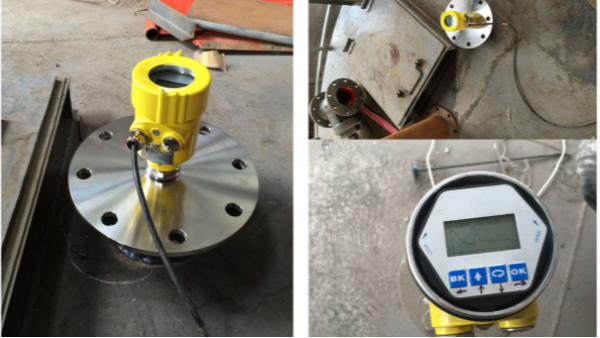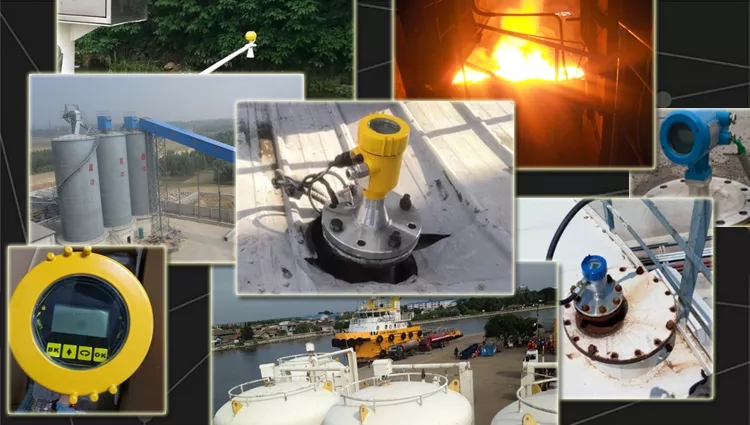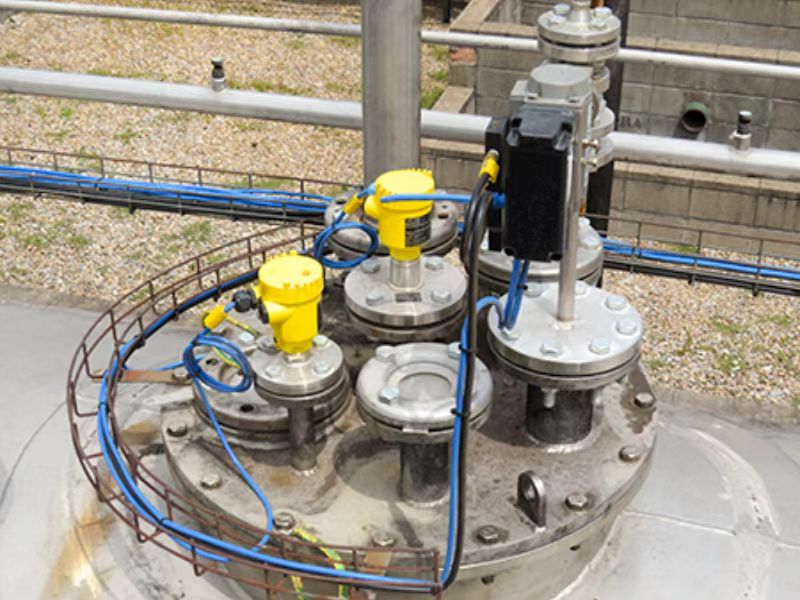BETTER TOUCH BETTER BUSINESS
Contact Sales at KAIDI.
The radar level gauge works by electromagnetic waves. Its working principle is to measure the specific liquid level by transmitting electromagnetic waves to the measured target. After the electromagnetic waves are emitted, they are reflected by the medium. For the radar level gauge, its key function is to ensure that it can transmit magnetrol guided wave radar signals smoothly. In our industrial production site, interference often occurs, so which interference sources will affect the measurement of the radar level gauge? let's see

For radar level gauges, there are many reasons for interference and many sources of interference. We analyze from four aspects: internal, external, AC and DC.
1. External interference
1. Celestial and celestial interference, first of all, what is celestial interference? Celestial objects refer to the sun or other stars, therefore, celestial interference refers to the interference of their electromagnetic waves on the radar level gauge. We are very unfamiliar with Tiandian. The so-called Tiandian is usually understood as the interference of the signal of the magnetrol radar level gauge caused by the ionization of the atmosphere, lightning, or the electromagnetic waves generated by natural phenomena such as volcanoes and earthquakes.
2. Mechanical interference, the so-called mechanical interference, means that some components inside the radar level sensor will also vibrate due to the large-scale vibration or impact of the external machine, and even undergo displacement and deformation, which may also cause the pointer of the instrument head to loosen and cause measurement. error. In this case, we usually use spacers, shock springs, etc. to cushion the shock.
3. Humidity interference, when the humidity increases, it will cause the insulator resistance to decrease, the dielectric constant to increase, the skeleton to be fluffy, and the resistance to increase, resulting in an increase in leakage current and changes in capacitance and inductance. Also, it softens the colloid and reduces measurement accuracy.
4. Chemical interference, chemical interference usually refers to some corrosive gases, such as acids and alkalis. The long-term action of these gases will not only damage the instrument and internal components, but also conduct electricity with the metal, affecting the normal operation of the radar level transmitter.
5. Thermal interference. During the operation of the thermal power plant, its thermal equipment will generate a lot of heat, causing changes in the surrounding instruments and ambient temperature. This is what we call thermal interference. These disturbances can affect the components of the magnetrol radar level gauge and further create problems such as inaccurate measurements.
6. Light interference, light interference mainly exists in semiconductor components. Many components used to control instruments are made of semiconductor materials whose conductivity changes under the influence of light. This will affect the normal use of the radar level gauge.

2. Internal interference
The interference comes not only from the outside, but also from the inside of the radar level gauge, such as interference caused by wires, inductance and capacitance between the power transformer and electronic components. In addition, the internal components can also generate noise interference. Today, most radar level gauges have also begun to be improved, using high-frequency microwave technology, which greatly improves the performance of the level gauge and reduces interference.

3. DC interference
In the measurement circuit of the radar level gauge, when there is additional DC current and voltage, it is DC interference. In severe cases, the measuring instrument will not work properly. The sources of DC interference are as follows:
(1) Additional thermoelectric potential.
(2) Chemical potential.
(3) When the radar level gauge contacts the DC power supply, the leakage current will generate interference voltage through the measuring circuit.
4. Communication Interference
AC interference can be divided into line-to-line interference and ground interference. Inter-line interference refers to the AC voltage between the output ends of the radar level gauge (compensation line) under external influence. This interference is also known as lateral, common mode or common mode interference. Generally speaking, the line-to-line interference voltage can reach several millivolts or even tens of millivolts. Ground interference refers to one of the two output ends of the radar level gauge (or compensation line), and its AC voltage to the ground is called the ground interference voltage. This disturbance is also known as longitudinal, in-line mode or in-line state disturbance. Generally speaking, the interference voltage to ground can reach several volts or even more than 100 volts. The main sources of AC interference are as follows:
(1) Electromagnetic induction is the main source of line-to-line interference.
(2) High temperature leakage.
(3) High-voltage electric field interference.
(4) Ground current interference.
(5) Effects of inhalation and leakage.
(6) Measuring the temperature on a charged body also introduces AC interference.
The above is the interference of the radar level gauge we discussed. When we install or use the radar level gauge, we can also determine whether your use environment will cause these interferences to the level gauge according to the above situation. If these conditions exist, anti-interference measures must be taken to ensure that the level gauge can serve you better.
We are here to help you! If you close the chatbox, you will automatically receive a response from us via email. Please be sure to leave your contact details so that we can better assist